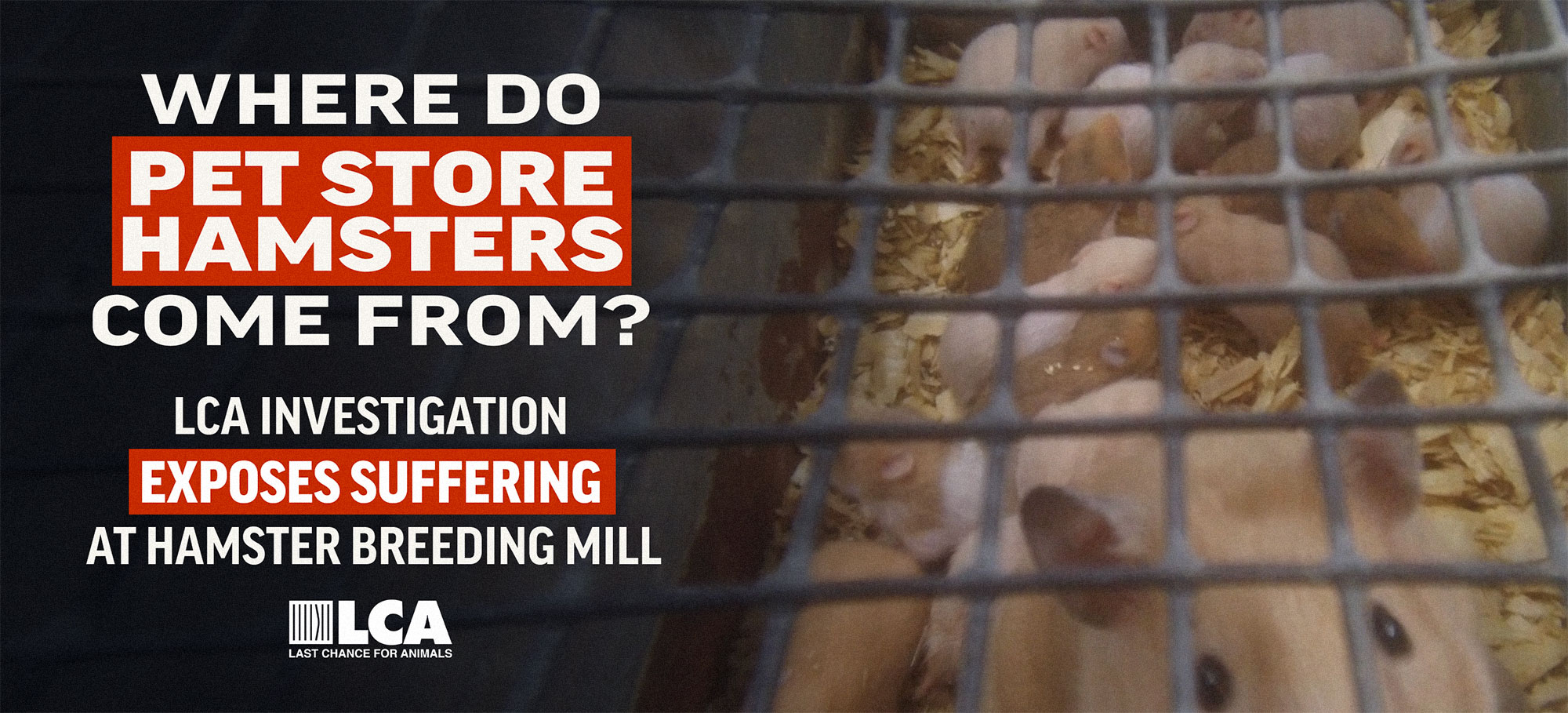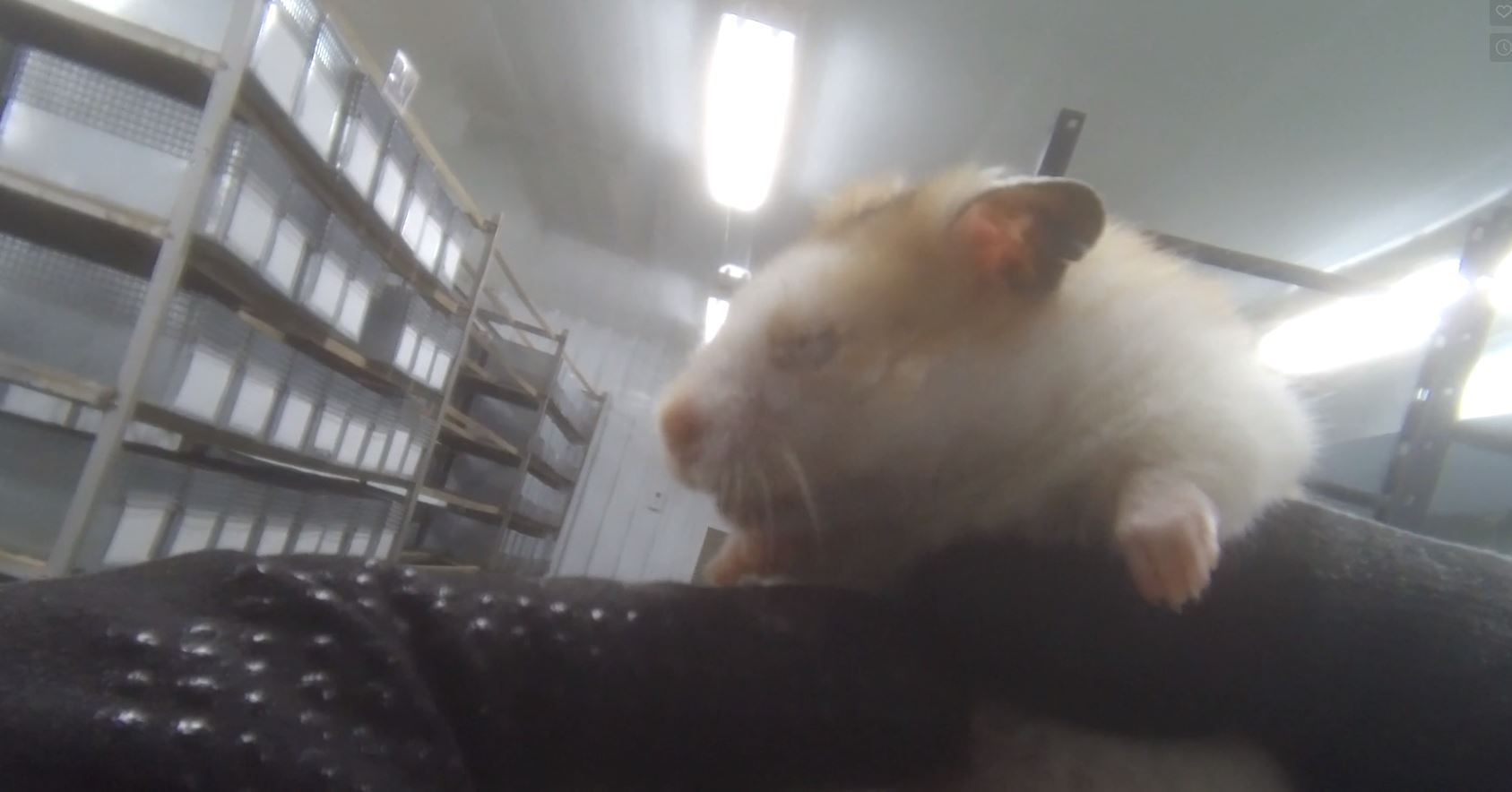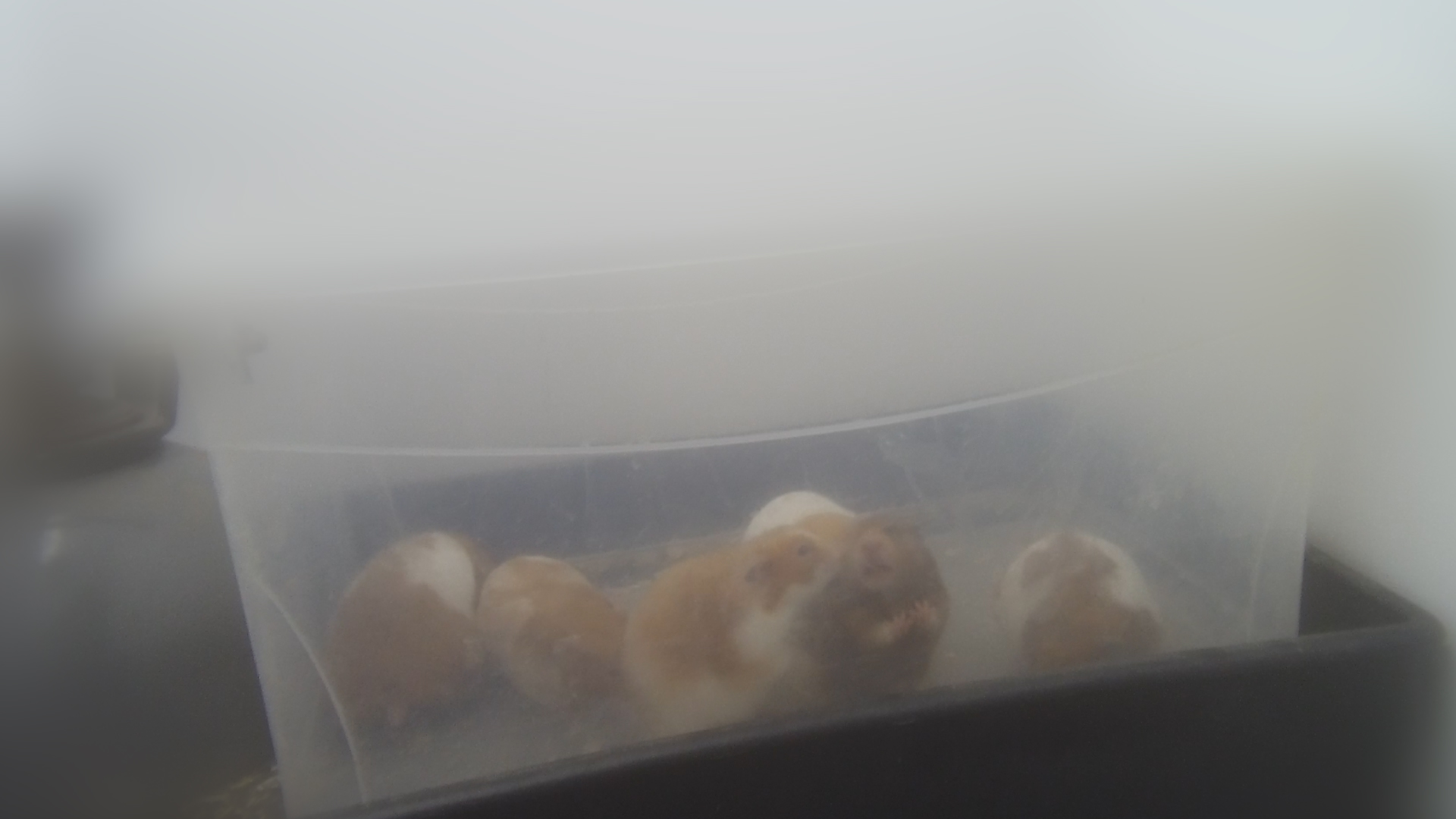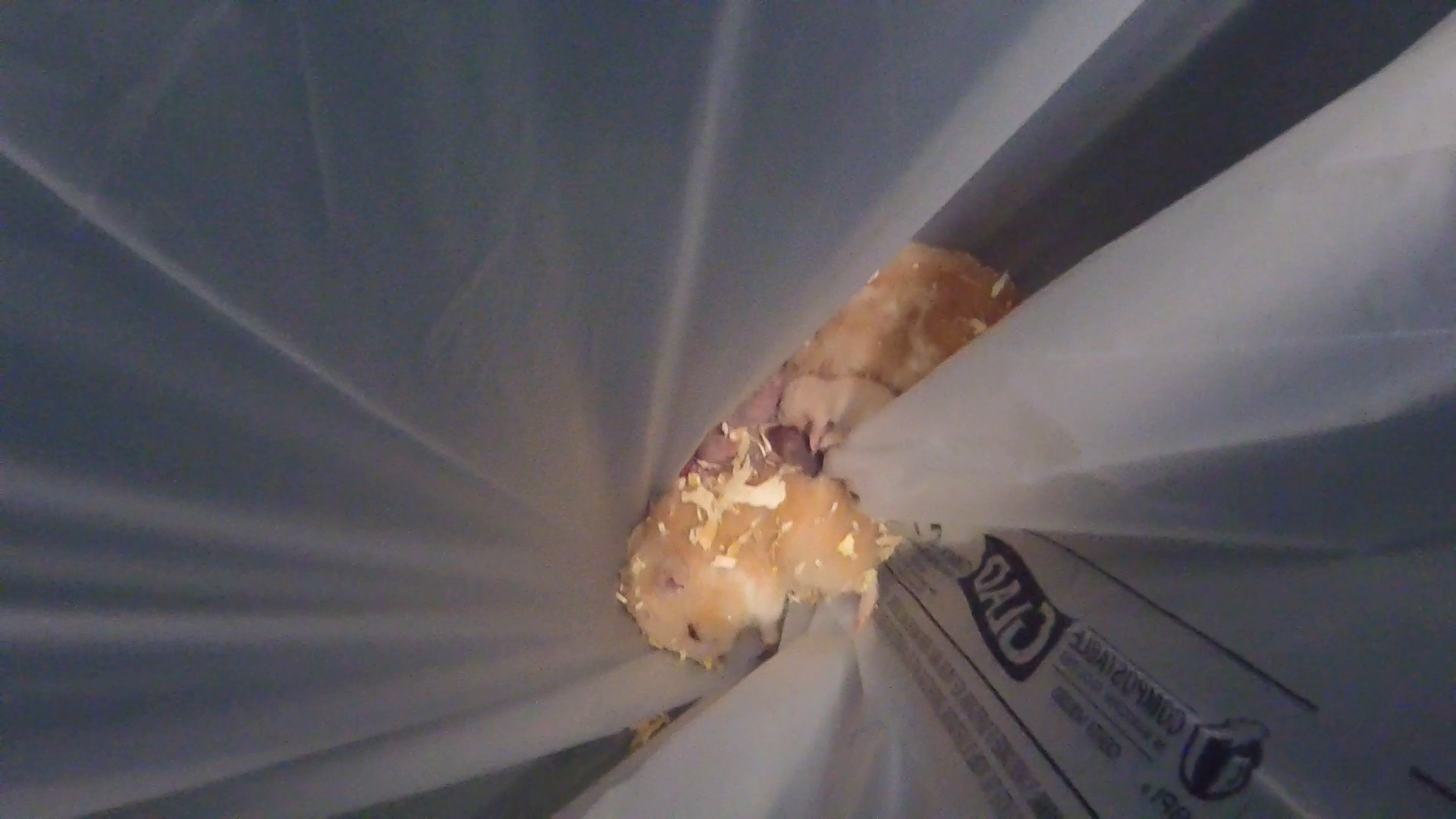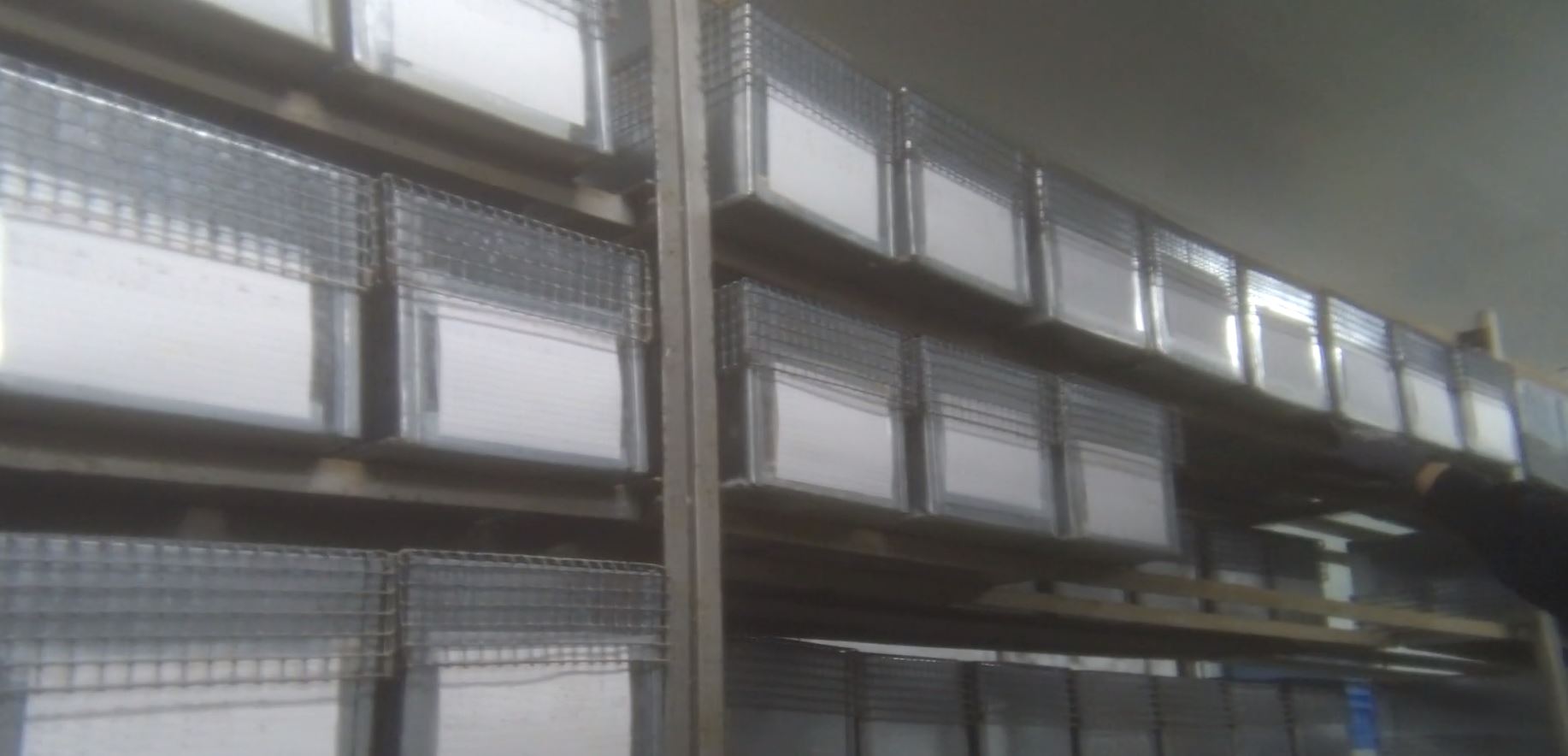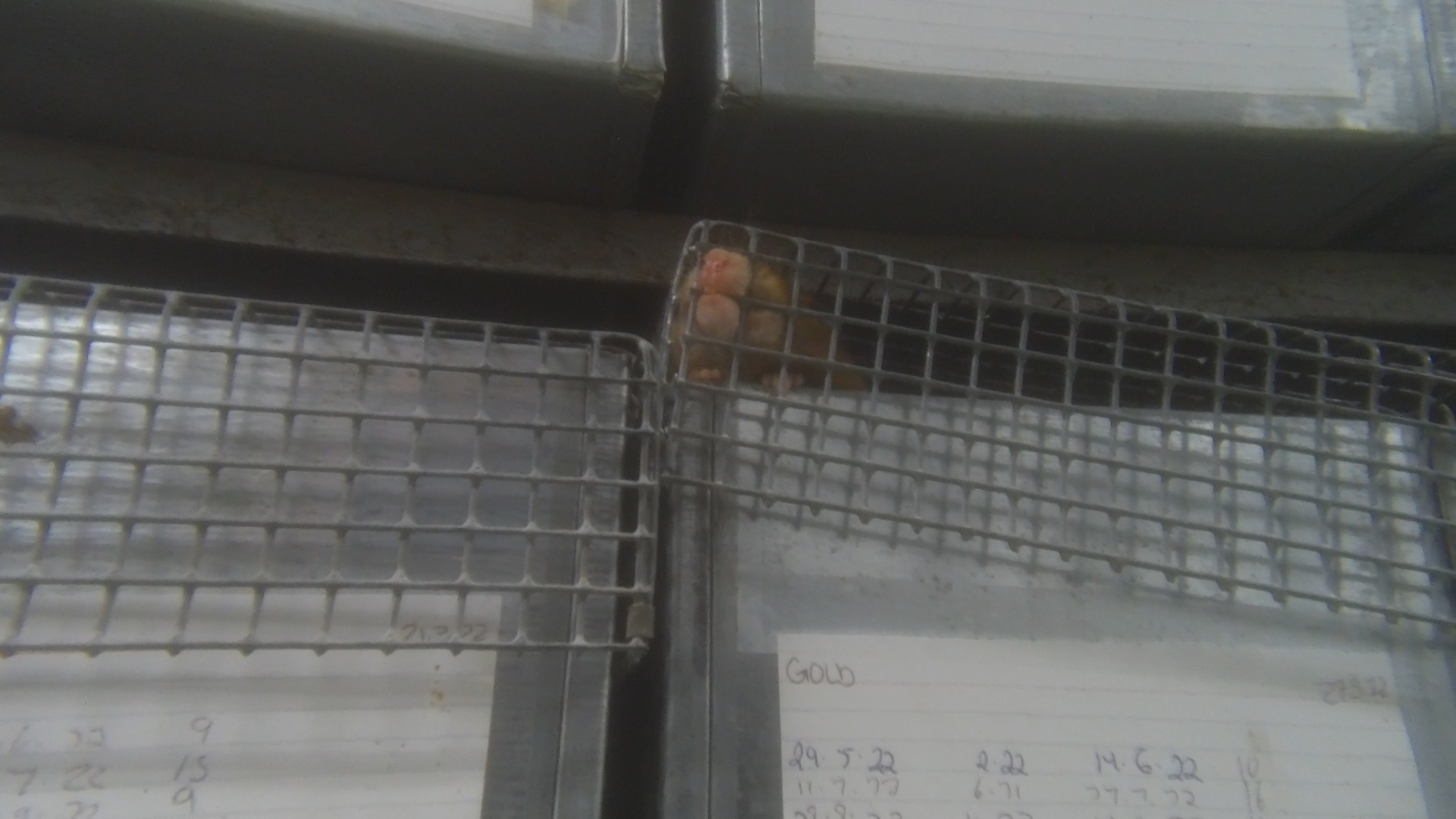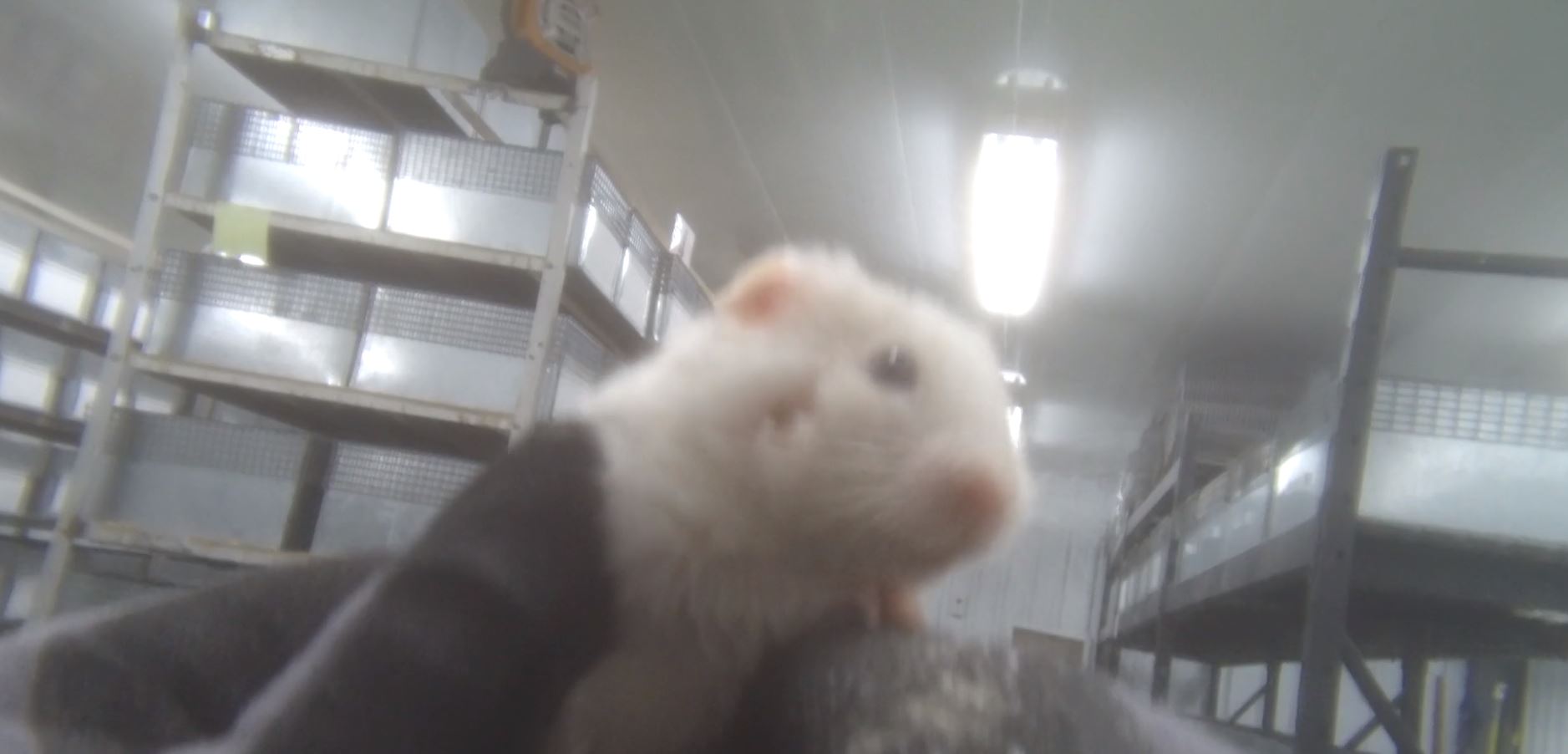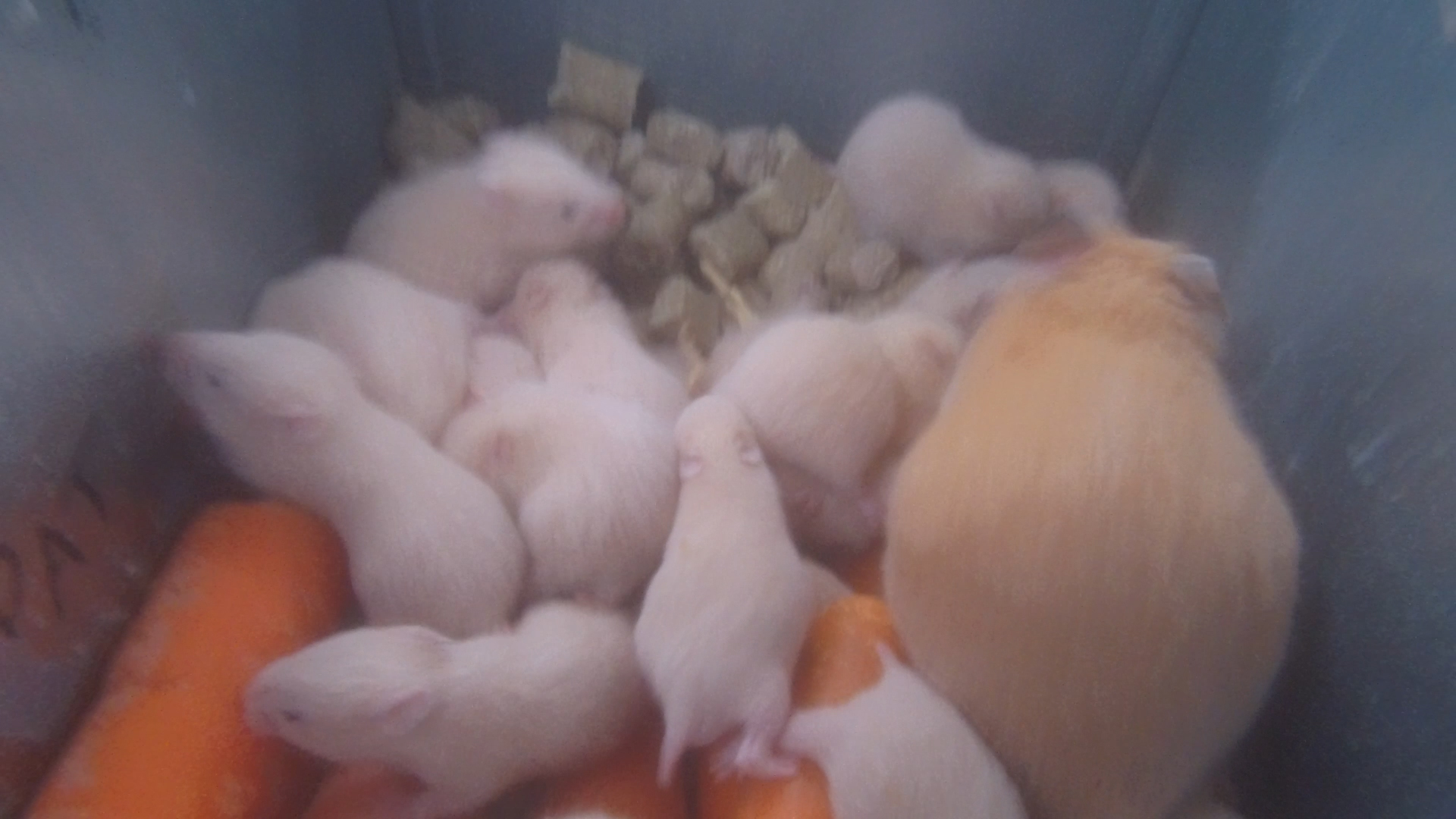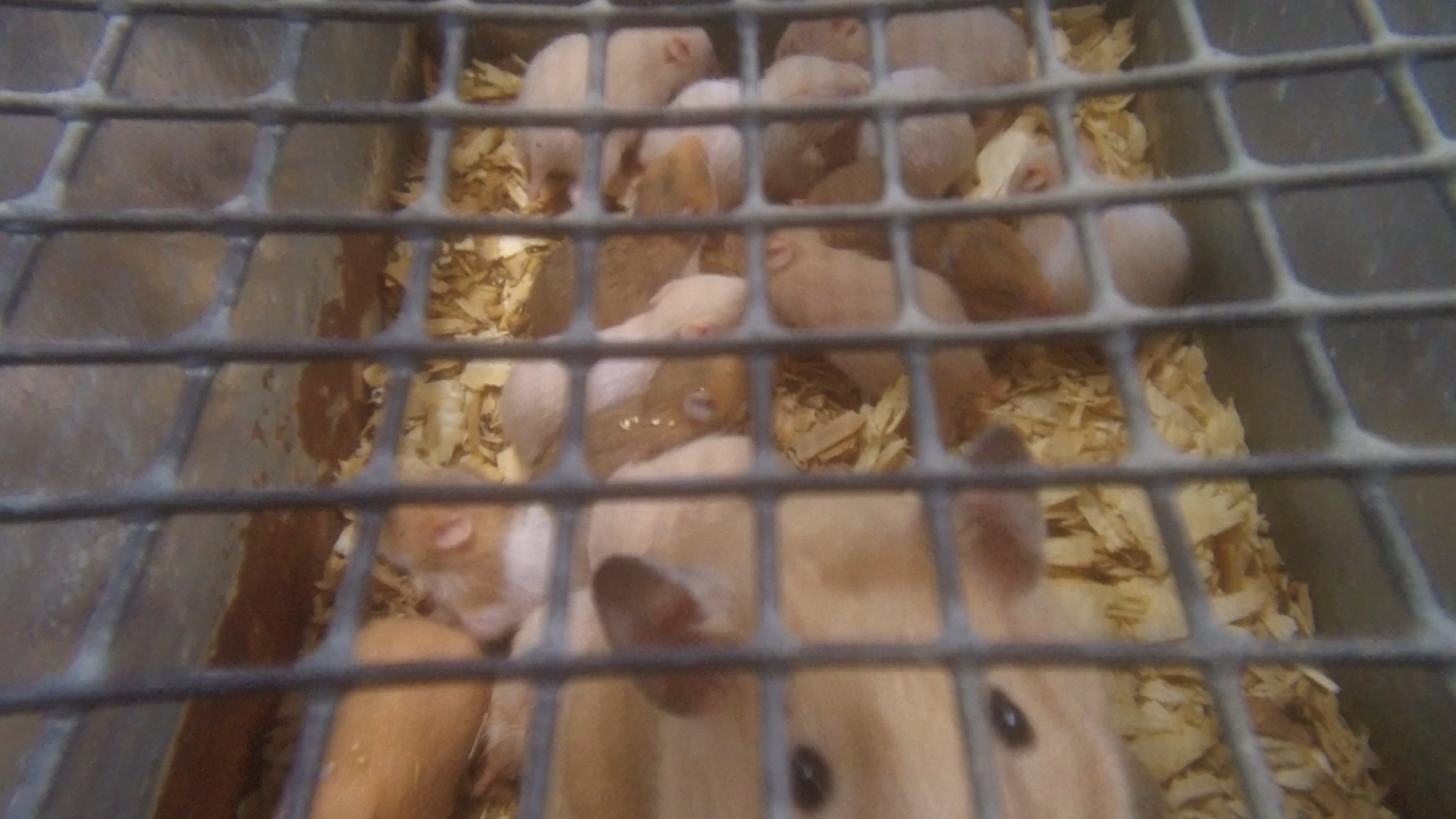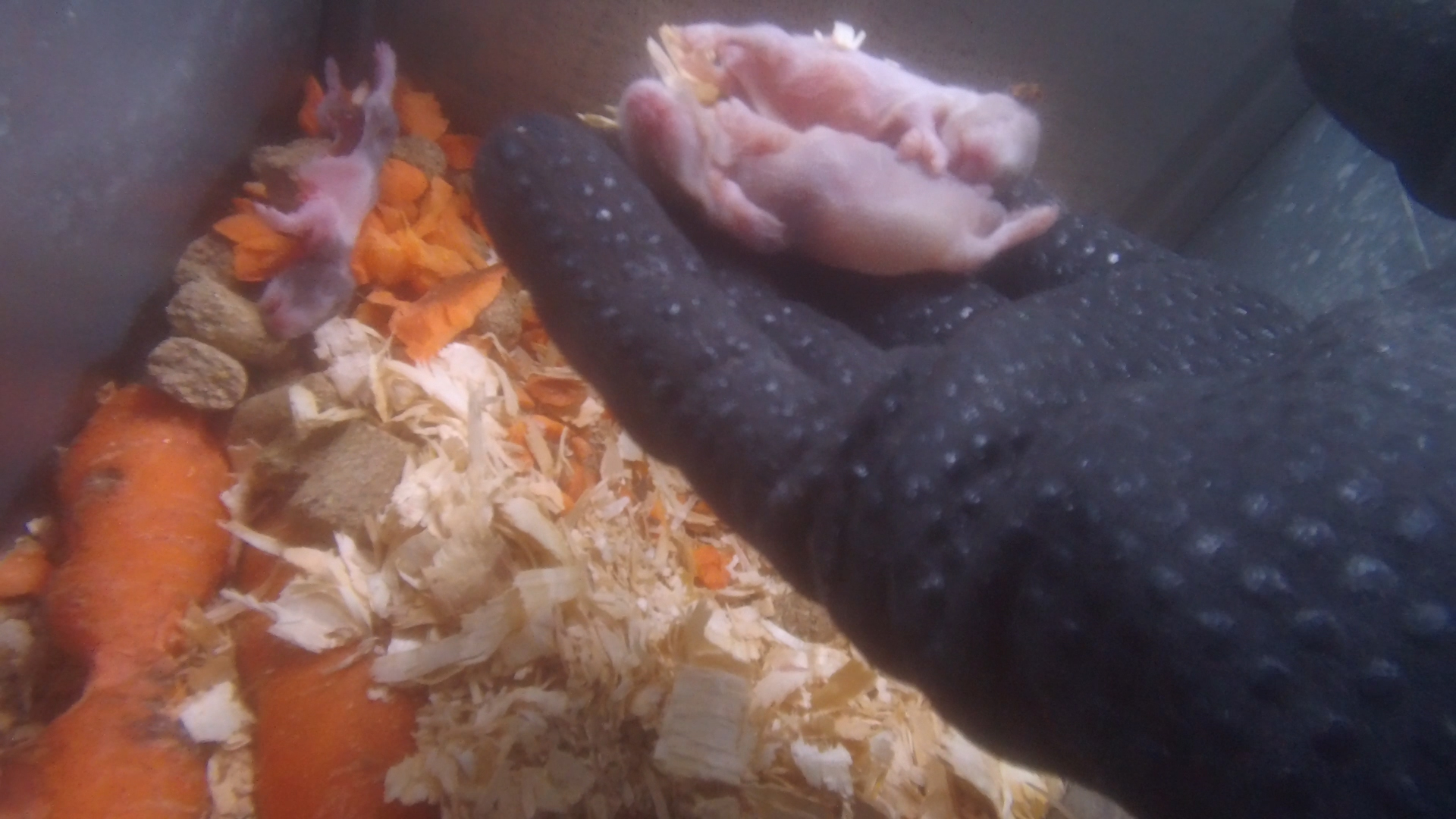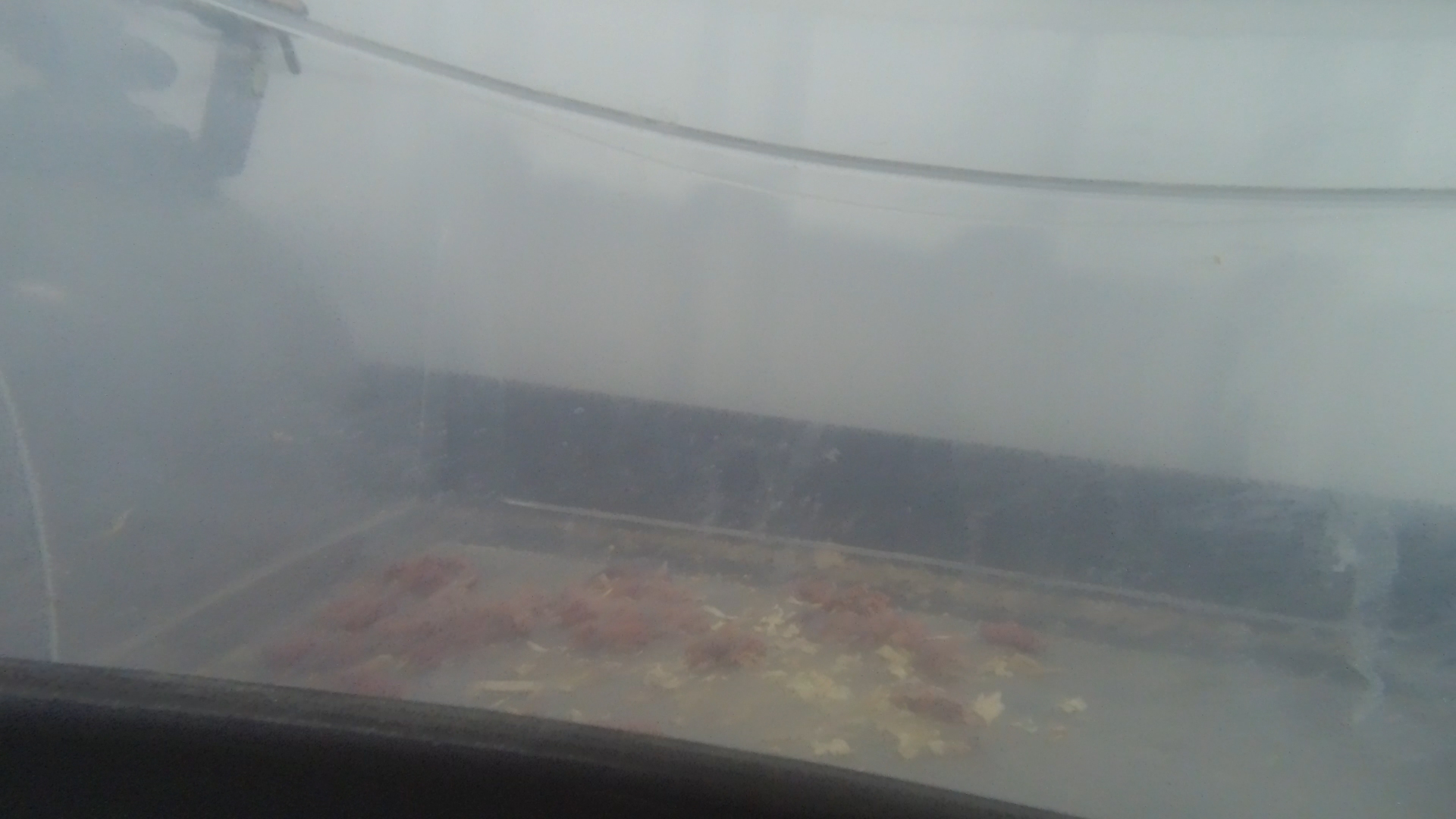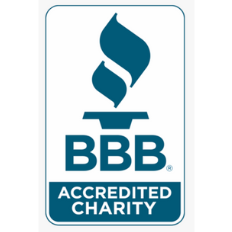SUFFERING AT HAMSTER BREEDING MILL
March 2024 - A new undercover investigation released by LCA exposes animal suffering at a breeding mill that breeds and sells tens of thousands of hamsters annually. Hamsters from these types of mills (often referred to as small-animal breeding mills or commercial breeding mills) can end up in pet stores like Petco, PetSmart, and Petland.
Watch and share the undercover investigation video narrated by E.G. Daily
Injuries, infections, wounds, and ailments like eye infections, dehydration, and hair loss, were common. Hamsters were not provided proper veterinary care. Although a veterinarian made mandated inspections of the facility, individual animals were not examined. An antibiotic intended for use in larger farmed animals, was used to treat infections and wounds by staff with little to no veterinary background.
Hamsters are sensitive and intelligent individuals with complex care needs. Hamsters are commonly bought as “starter pets” for children. The hamster industry exists to supply mass numbers of animals to the public. Similar to the puppy mill industry.
Mill hamsters are kept in small, overcrowded, soiled cages with minimal shavings for burrowing. Female and male hamsters are repeatedly bred. Hamsters who are sick, injured, over-bred, and deemed ugly, are routinely killed.
Commercial small-animal mills breed various species of animals: hamsters, guinea pigs, skinny pigs, reptiles, fish, birds, rabbits, mice, and rats. These animals are treated as breeding machines who are only valued for their ability to bring in a profit.
LCA’S INVESTIGATION REVEALED:
- Hamsters are kept in small, overcrowded, soiled cages with minimal shavings for burrowing, and no enrichment. Hamsters have an instinctive need to burrow deeply for their well being.
- Hamsters who are sick, injured, over-bred, and deemed ugly are all killed by poisonous gas.
- Adult hamsters can take several minutes to die in the plastic gas chamber with some crying in distress as they are gasping for air. Baby hamsters take up to 40 minutes to die.
- The killing of hamsters is done using a common plastic storage tub connected to the gas canister.
- Due to the stressful and unnatural breeding mill environment, hamsters routinely display signs of stress: cannibalization, hamsters pacing back and forth in their cages, and they also got their heads stuck in cage wire as they try to push and chew their way to escape.
- Female hamsters repeatedly bred until they are killed.
- Breeding males are housed up to five together in a single small cage, leading to fights, injuries and death.
- Hamsters have no access to water and carrots are used as a water replacement.
- Mill hamster illnesses are chronic; these include infections, injuries, eye infections, dehydration and hair loss.
- During the timeframe of the investigation, a veterinarian made mandated inspections of the facility, but individual animals were not actually examined.
- The employees treated infections and wounds with an antibiotic intended for use in larger farmed animals.
EXPERT STATEMENT ON INVESTIGATION VIDEO
“The infinitesimally small cages with no enrichment is a deliberate choice against the welfare of the animals. This is especially distressing when considering that it is common for there to be multiple males or entire litters in such a small space, and given the known risk of neurotic bar chewing leading to injury. Hamsters are also burrowing animals, and feel safest when allowed to deeply nest. The current housing is completely inappropriate to the species.
The lack of access to clean drinking water, apparently supplemented with carrots, is additionally appalling. Hamsters are desert dwellers, but still need fresh water to survive. We have seen overuse of vegetables lead to bacterial illnesses and death—especially in young pups.
The use of topical sprays in lieu of veterinary care and the choice to allow animals to suffer so severely before euthanasia is horrific. Viewing some of the illnesses and diseases shown, it is clear that these animals must be in immense pain (as corroborated by the mouse grimace scale).”
- Tony Adler of California Hamster Association and Snow White’s Rescue Cottage
PET HAMSTERS: A TRAGIC HISTORY
In 1930, Israel Aharoni, a biologist, captured a mother hamster and ten of her babies from a field in Syria, intending to breed them for laboratory use. Aharoni had to dig 8’ underground to capture them. Once put into a box, the mother hamster began to cannibalize her babies so Aharoni killed her. The babies were taken to a laboratory, where some died and others escaped. In the end, he was left with a single surviving brother and sister pair, which he successfully mated. Today, “Syrian hamsters” (the most common hamster sold) are descended from this single brother and sister.
Syrian hamsters (aka Golden) started being marketed as pets in the U.S. in the late 1940’s by a hamster breeding company in Alabama owned by Albert Marsh. Marsh had no veterinary background and was an unemployed highway engineer when he began breeding hamsters. He sold hamsters through ads he took out in various magazines and urged customers to begin breeding hamsters themselves. To further his sale of hamsters, Marsh lobbied to change a state law in California where owning hamsters was illegal. In 1948, he convinced the California State Department of Agriculture to declare Syrian hamsters as “normally domesticated animals.”
Thus starting the cruel hamster mill industry.
HELP ME!

